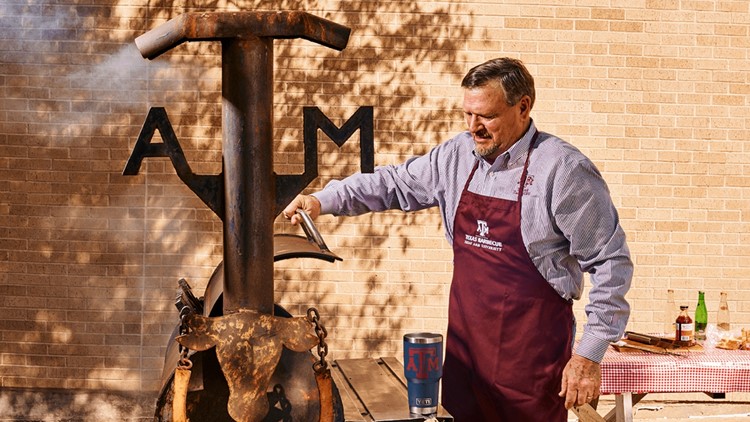COLLEGE STATION, Texas — As temperatures rise for the summer, many will look to barbecuing as their outdoor activity of choice.
Ray Riley '79, '81 is the manager for the Texas A&M University Rosenthal Meat Science and Technology Center and a teacher at the school's renowned barbecue summer camp.
However, getting into barbecuing can be a daunting, especially with some world-renowned experts having honed their craft for decades.
Here are some of the tips that Riley recommends for those looking to start on their barbecue journey:
- A good thermometer can make all the difference
- "You need to accurately measure the temperature of your meat and your pit. With more experience, you'll tell by time and feel, but it's best to play it safe when starting out."
- Make use of as much knowledge that is out there about barbecue as possible
- "(I)f you had a question, you had to call up an old friend or relative. These days, the internet has just about every answer you need. I also recommend Aaron Franklin's books."
- You don't need a huge smoker to get started, but don't go with a gas cooker
- "something as simple and inexpensive as a small pit smoker can hold heat just fine. You don't need a pellet grill or some big ol' pit on a truck trailer to make good barbecue. I wouldn't recommend a gas cooker, though—it just doesn't give flavor like wood or charcoal."
- Starting out by making pulled pork is better for beginners than brisket
- "Everyone wants to make brisket, but a good brisket is hard to master. Making pulled pork out of a Boston shoulder is a lot simpler, and you can work your way up from there."
- Understand different grades of beef, but don't break the bank
- "A higher USDA grade means higher quality beef, but you don't always have to get USDA Prime. Buy what you can afford."
- Don't start smoking too early after you've started your fire
- “Preparation depends on what you’re making, but definitely get your pit up to temperature and burn until the heavy smoke clears out before throwing in the meat.”
- Take your time
- "Some people prefer certain temperatures, but most of the time, I recommend cooking at a nice, low 250 degrees Fahrenheit and making sure you're in no rush."
- Don't check in on your meat too often--more time smoking means more flavor
- "If you're constantly lifting the lid on your smoker, you're not cooking. Set a timer to check it every hour or so and watch TV, read a book or do some chores. And if anyone asks you when the meat will be done, tell them it'll be done when it's ready!"
“We always tell our students, ‘As long as you know how to cook, you’ll always have friends,’” Riley said.
Click here to read the original article on Texas A&M Today.
Also on KAGS:



